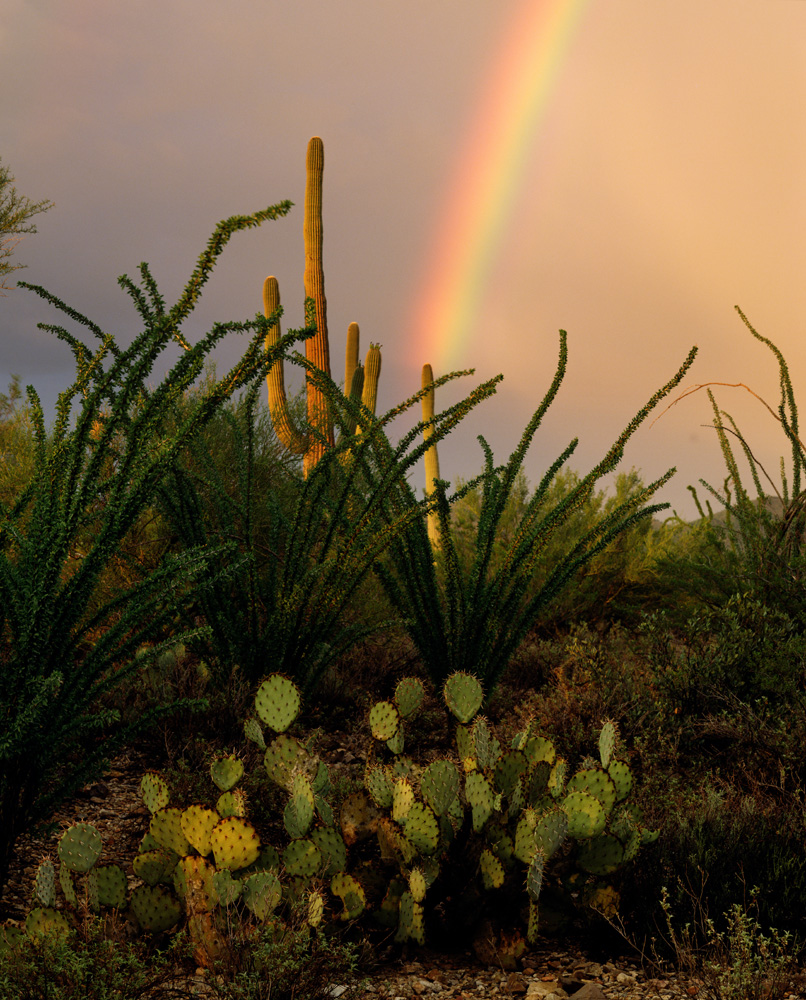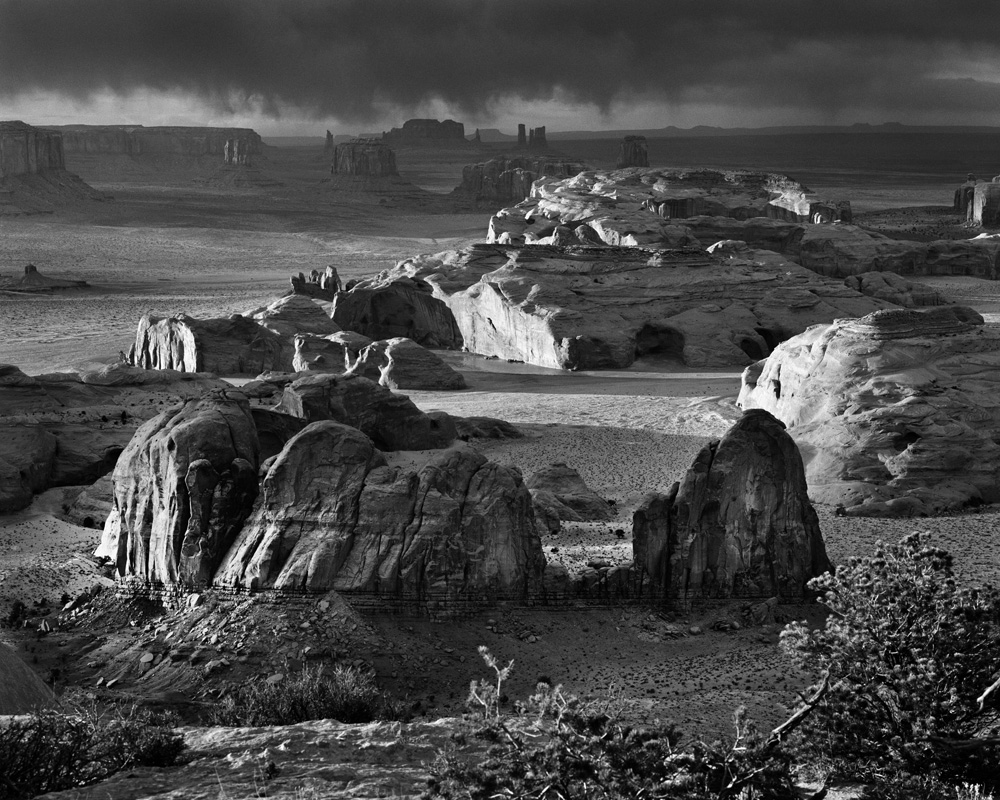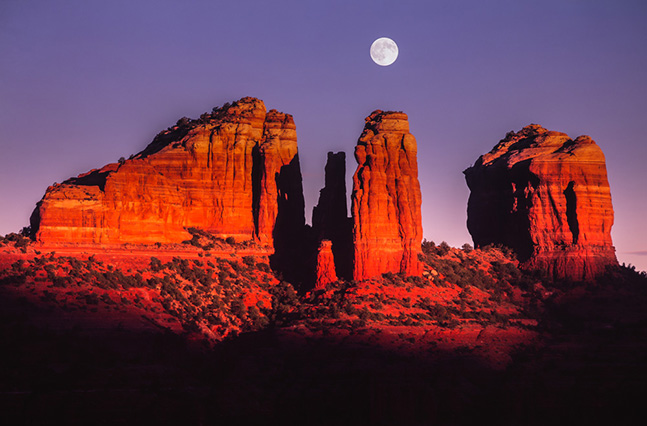David Muench has photographed some of the most spectacular landscapes of the world in a career spanning more than 60 years. His images and books have inspired countless landscape photographers and travelers and, according to Muench, brought meaning to his life.
“Photography is an extension of my eye,” Muench said. “I see, therefore I understand better. What I see and what I photograph is the timeless moment—that moment existing between past and future; that moment that is—in the photograph—eternal.”
Muench’s photographs will soon be positioned to provide timeless inspiration to not only his fans but also students, researchers, teachers and others, thanks to his donation of his photographic legacy to Special Collections and Archives at Northern Arizona University’s Cline Library.
“I hope my work and way of seeing will inspire students to be creative in their response to the world around them,” Muench said. “Because landscape photographers instinctively connect their inner sensibilities and feelings with the rhythms and visual shapes and forms of nature, I can imagine my images serving as a kind of communication with other photographers.”
NAU President José Luis Cruz Rivera said that Muench’s gift will have a lasting impact in Arizona and beyond.
“We’re honored that David Muench has entrusted his life’s work to NAU,” Cruz Rivera said. “It has the potential to provide significant impacts across our strategic priorities, from educating students and informing researchers who will contribute to a more sustainable future to engaging a global audience of people who share an appreciation for the wonders of our world and excellence in photography. We look forward to sharing it with the world.”

Connecting a legacy
Peter Runge, head of Special Collections and Archives, said the collection’s potential impact was evident to Muench when he and his wife, Ruth Rudner, toured the archives, the library and the NAU campus in the summer of 2019.
“As we toured, we talked about how we could connect his archival legacy to faculty, curriculum and students, and that really resonated with him,” Runge said. “His eyes just lit up. He wants to inspire student photographers to continue capturing the art of landscape photography.”
Aside from the collection’s potential integration in support of high-quality academics, which is one element of NAU’s mission, it also connects to the university’s commitment to impactful scholarship, creative endeavors and public service.
“As we dig deeper, the collection also touches other issues in the world today,” Runge said. “David has been making photographs for over 70 years. Over the course of that time frame, his work not only documents a landscape in time; it also documents change over time, such as environmental change, changes to Indigenous and ancestral lands, changes brought on by wildfire and water, etc. These issues were not necessarily the intent of these photographs; however, they will have a new impact beyond their aesthetic quality and purpose. That’s one of the many aspects of David’s collection that excites me.”
Though Muench was born in California and now calls Montana home, he has photographed northern Arizona extensively, from the bottom of the Grand Canyon to the top of the San Francisco Peaks, which hold a special place in his heart, Runge said.
“David said he comes to the San Francisco Peaks to balance himself and center himself,” Runge said. “He feels a spiritual connection to the Peaks. Having his archival legacy situated in one of his favorite locations is fitting.”
Special Collections and Archives is already home to the photographic archives of Josef Muench, David Muench’s father, who was a photographer for Arizona Highways for more than 50 years. While Josef Muench’s work focused heavily on the Southwest, David Muench’s work includes the Southwest but also demonstrates a global scope, Runge said.
“David’s work uses a unique style or technique that he calls ‘near/far’,” Runge said. “He often has an object in the foreground, but frequently it’s the background that’s the important thing. For example, you may have a rock or a tree in the foreground that frames and contextualizes the background.”
Uniting a collection

The Muench donation encompasses a massive collection of material: transparencies, slides, prints and framed exhibit pieces; digital content; books andother publications. There are even a few cameras.
The collection is being transferred to Cline Library from four locations in three Western states. The materials collected at the first location in New Mexico filled two 18-foot-long box trucks (refrigerated trucks are used to ensure the photographic materials don’t buckle, warp or melt) to the brim. A subsequent trip to a first California location filled a third 18-foot truck to capacity; a final trip to a fourth California location filled a cargo van. The materials from the three trips are now housed in Special Collections and Archives; the final batch of materials—digital files housed in Montana—will be transferred to the archives by the end of the year.
When the last image is transferred, a collection that had been in dispersed locations will then be united in view of the San Francisco Peaks.
As the pieces of the collection are brought into the archives at NAU, archivists are recording baseline information that will help them prioritize and prepare the collection for access. Once the entire collection is onsite, the archivists will be able to fully assess the collection and develop a plan to make it available to users. Student employees and interns will participate in the archival arrangement and description activities that will lead to access to the collection, a once-in-a-lifetime learning opportunity for them.
Dean and University Librarian Cynthia Childrey is excited to see the Muench collection coming together at Cline Library and about the potential that the photographer’s gift holds for the future.

“It has been one of the most thrilling experiences of my career to watch the David Muench Collection arrive at Cline Library and to have the opportunity to meet him and talk with him about his work,” Childrey said. “We are honored that he has entrusted us with preserving and providing access to the David Muench Collection for generations to come. We’re also incredibly excited about the learning and research opportunities it brings to our doorstep.”
Given the size and scope of the collection, it will require significant time and effort before it is available for use. Runge anticipates significant demand to access it from far beyond NAU and northern Arizona, which already attracts world-class landscape photographers due to its natural beauty.
“We anticipate a community forming around it,” Runge said. “It has the potential to attract photographers, artists and others to Special Collections and Archives to explore the collection. There is a lot that people have not seen.”
Archives staff plan to provide periodic updates as materials are processed and made available to users. For more information, visit the David Muench page on the Special Collections and Archives website.
You can also make a difference in the lives of Lumberjacks by donating to the NAU Foundation’s Special Collections and Archives Fund. Your gift will help support the preservation of and accelerated access to The David Muench Photographs.
Laura Rose Taylor | Cline Library




